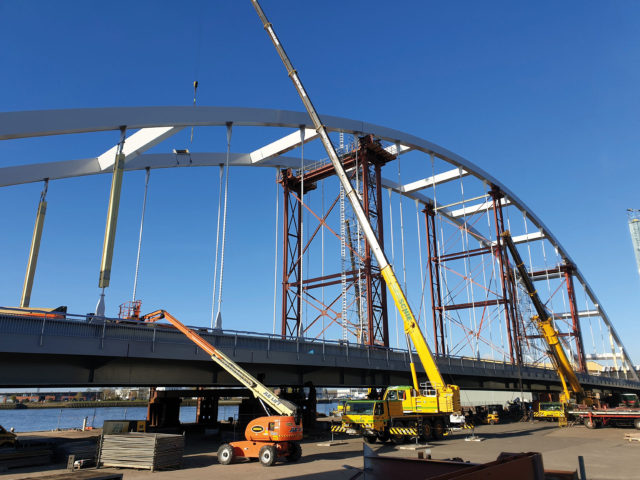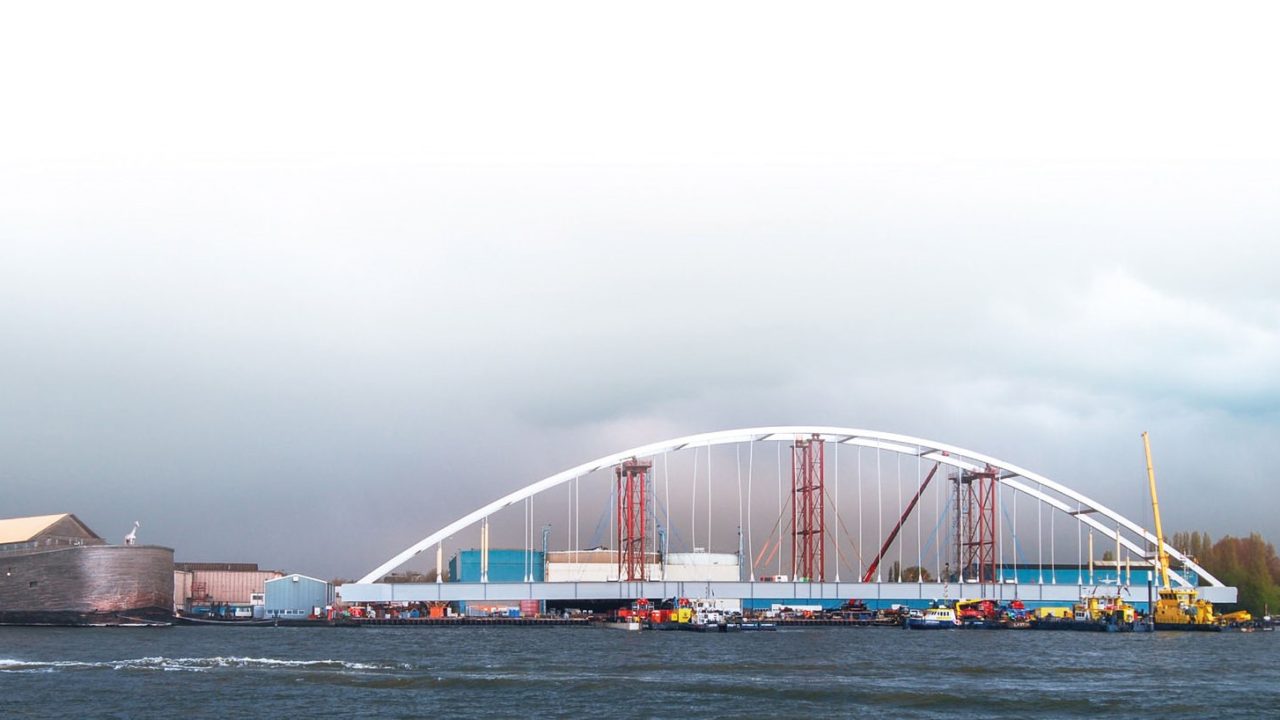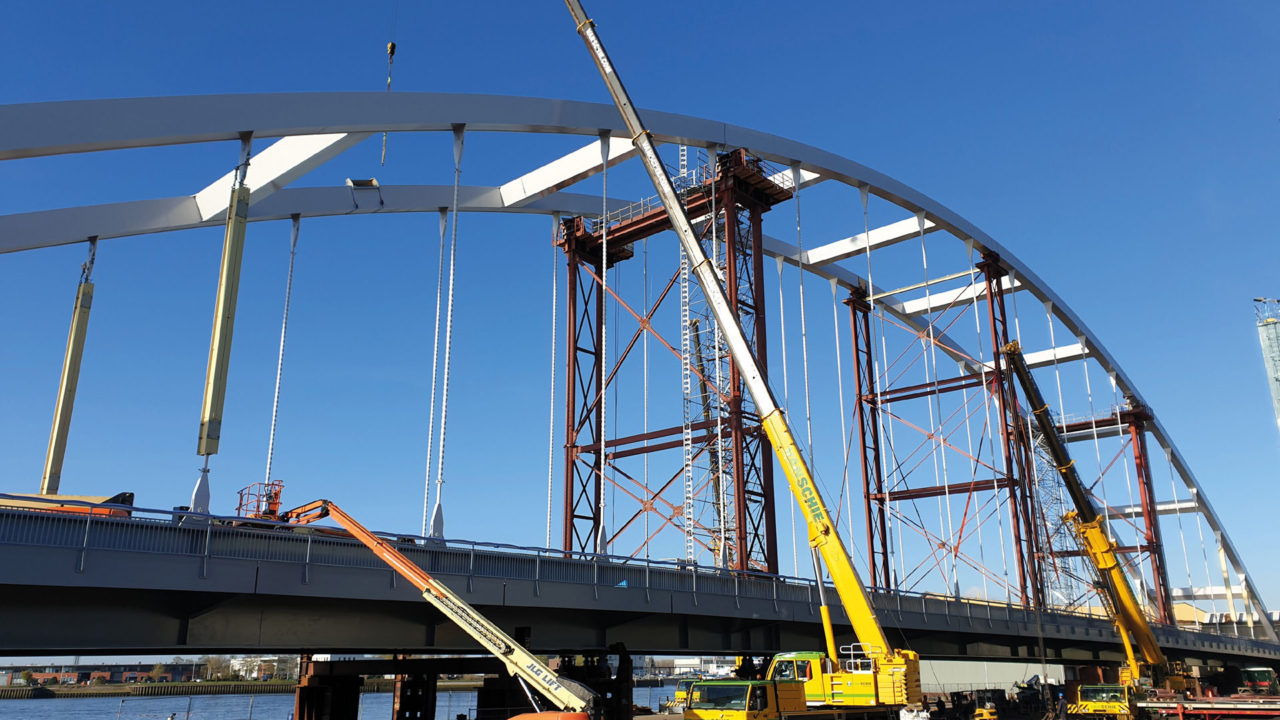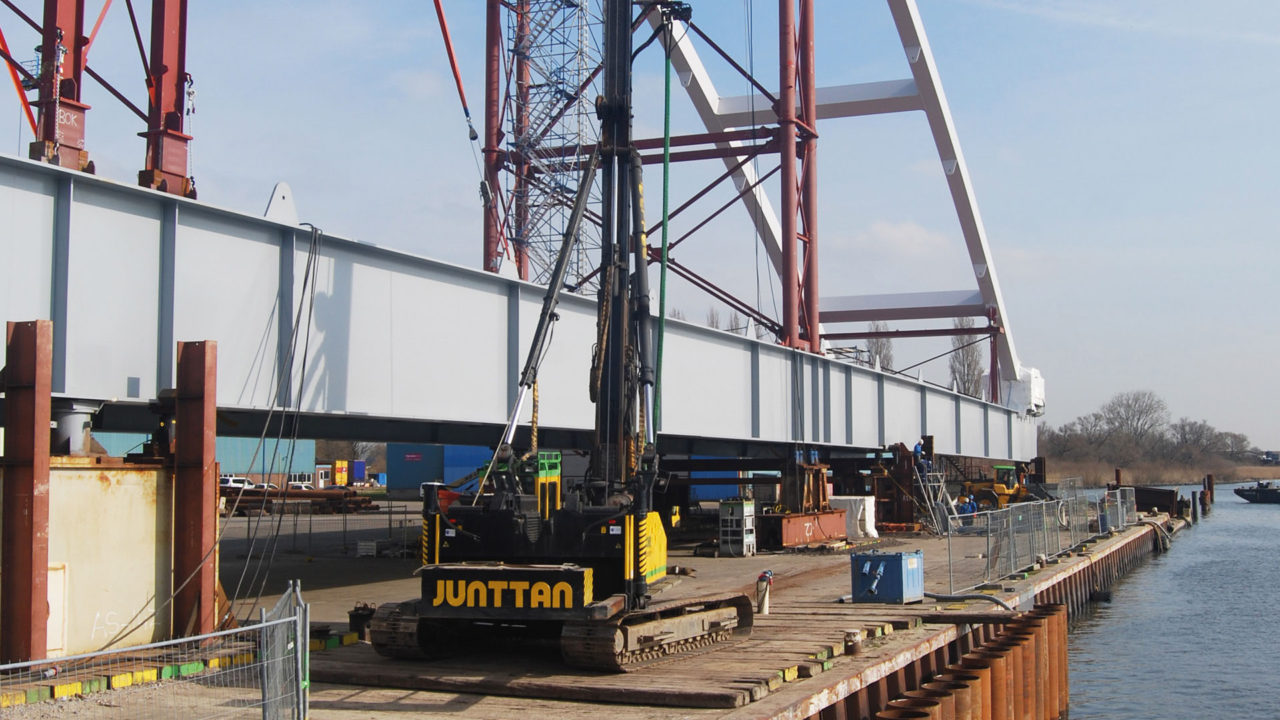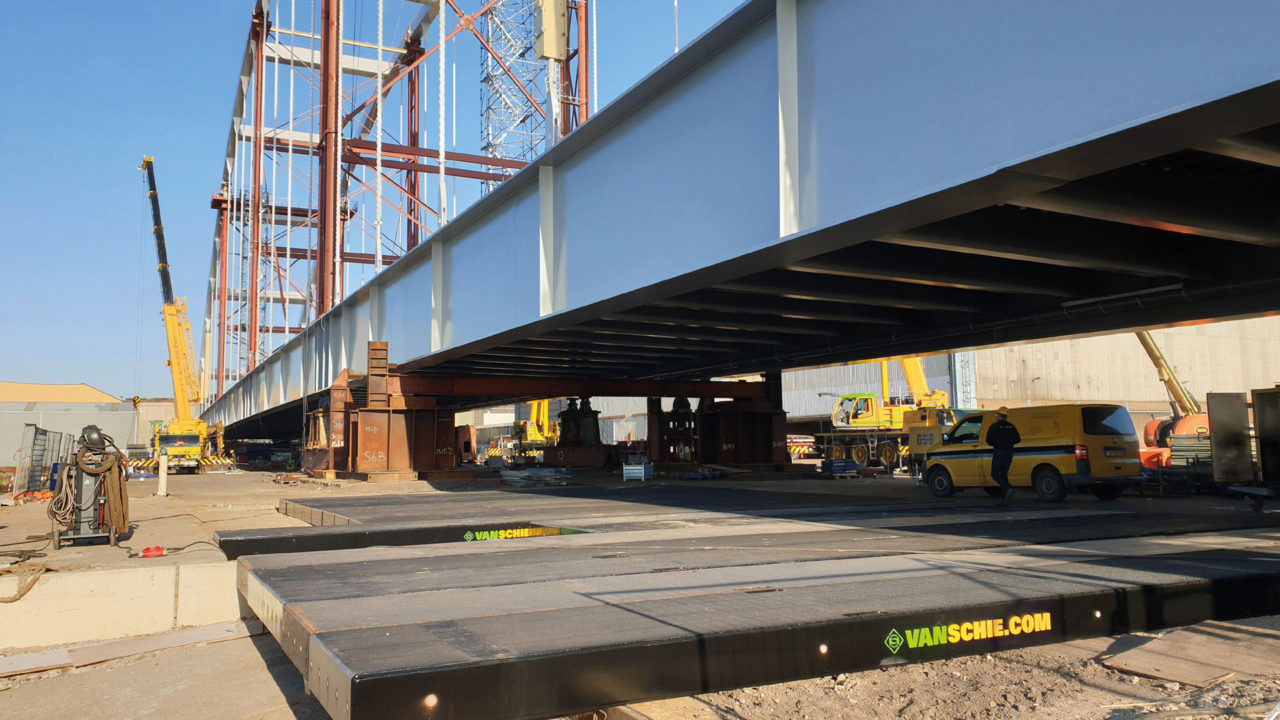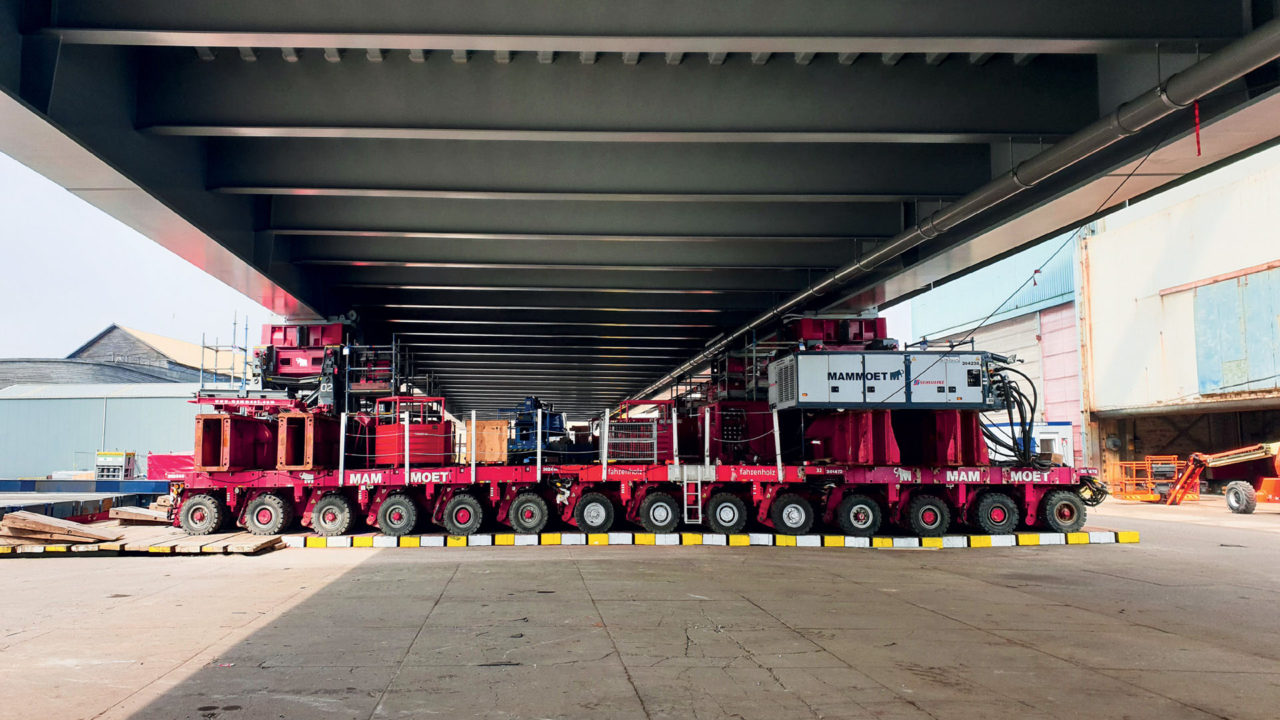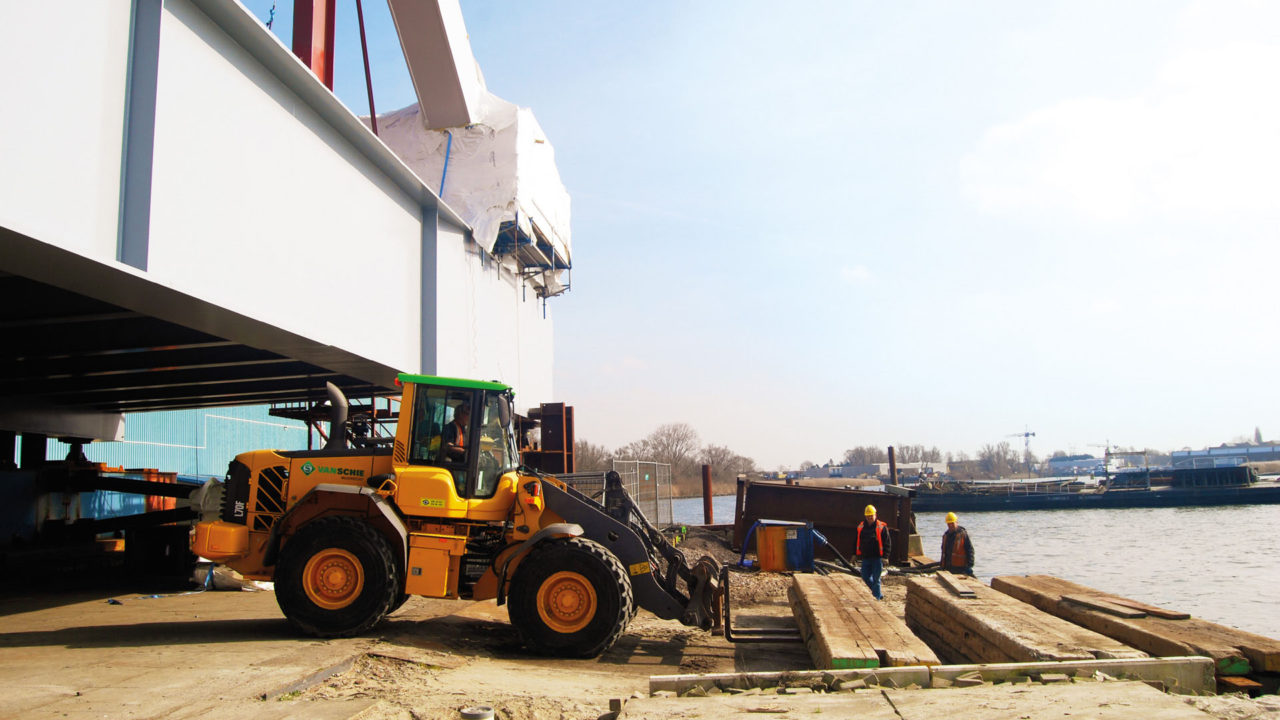In Krimpen aan den IJssel – on a site owned by Van Schie – a second “Suurhoff Bridge” has now been built to be placed next to the first bridge. This will distribute the load of traffic over both bridges in the coming years, thus sparing the old bridge.
The new bridge, built by steel builder Hollandia, is 200 meters long, 40 meters high and 20 meters wide. The big challenge, however, was: how to transport such a huge steel structure to the Maasvlakte? And that over a distance of 40 kilometers.
Actually, there was only one solution: over water, floating on two huge pontoons, pulled and steered by tugs. Hence, this arch bridge was built right on the banks of the New Maas River. But how do you “slide” this huge hulk from the quay onto the two floating platforms? A kind of roll-on-roll-off structure had to be built to ensure a smooth transition from the shore to the moving water of the New Maas.


